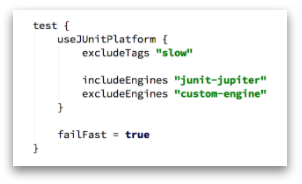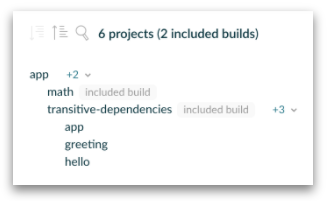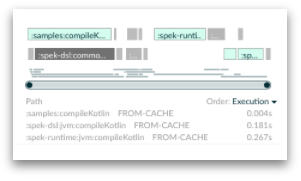February 2018
Table of Contents
IntroductionWelcome to the February Newsletter! In this issue, we’ll cover just-released Gradle 4.6 and Gradle Enterprise 2018.1, then deep dive into using the build cache with Kotlin projects. |
From the communityWe ❤️ you Gradle community! Thank you for your blog posts and contributions!
Have a blog post or plugin you’d like to see featured here? Just send us an email with the details to newsletter@gradle.com. |
Gradle 4.6
Gradle 4.6 is a big release.
There is more. We could scarcely fit the highlights into this 53-second video; better to check the Gradle 4.6 release notes. |
Gradle Enterprise 2018.1
Gradle Enterprise 2018.1 features seamless support for composite builds, a powerful mechanism for combining or splitting Gradle builds. When using build scan plugin 0.12.1+, you will see:
More details are available in the release notes. |
Kotlin Build Caching
Kotlin 1.2.21 provides support for Gradle’s build cache. You can enable the build cache for your Kotlin projects by following this blog post. Build caching is particularly effective when a CI instance populates a shared, remote build cache. Community members have written 2 tutorials for doing just that: |
Upcoming online training
Until next time! —The Gradle Build Tool Team |
If you have some news you’d like us to share in the next issue,
let us know using the #community-news channel on the Gradle Community Slack or by mentioning @Gradle on Twitter/X.
Until next time!
— The Gradle Team

|
||||
|
Gradle Inc. | 2261 Market Street | San Francisco, CA 94114 |
||||
|



